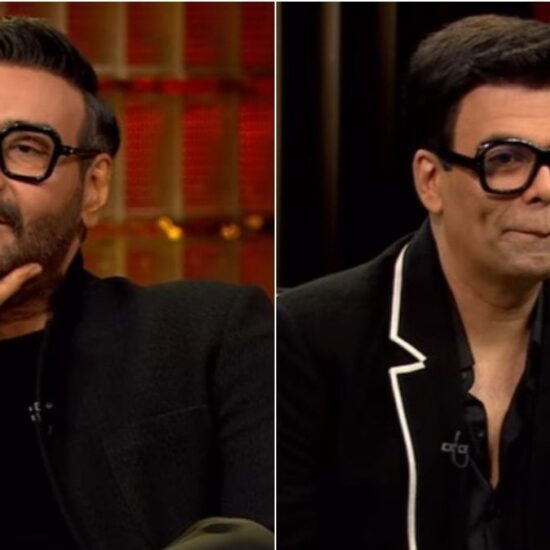
The Long Rider
Documentary about the epic horseback adventures of Filipe Masetti Leite. Directed by Sean Cisterna. Opens Friday at Cineplex Yonge-Dundas. 96 minutes. STC
You have to be darn sure of your story when your film about an epic journey begins with its triumphant conclusion. If we already know the trek was a success, what’s the point of watching the rest?
“The Long Rider” is your answer. Sean Cisterna’s remarkable documentary is packed with so many pitfalls for its intrepid traveller — everything from drought to deadly heights to dangerous cartels — that even knowing the outcome going in, you’ll still find yourself catching your breath, wondering if disaster is imminent.
The film tracks the more than two-year odyssey of Filipe Masetti Leite, a Brazilian cowboy, adventurer and journalist who calls Toronto home. A decade ago, he embarked on a 16,000-kilometre trek on horseback from the Calgary Stampede south to his family’s homestead in São Paulo, Brazil, where he lived before moving to Canada as a child. (Leite has written about his multiple equestrian treks for the Star, journeys that totalled 25,000 kilometres over eight years.)
His travelling companions for the film’s Calgary to Brazil trip, very much part of the story, were two quarter-horses named Frenchie and Bruiser, plus a mustang named Dude that joined them along the way.
Leite, just 25 years old at start of his trip, was inspired by “Tschiffely’s Ride,” the true story of Swiss author/adventurer Aimé Félix Tschiffely, who in the 1920s rode from Argentina to New York with two beloved horses. Leite’s father used to read the book to young Filipe at bedtime, sparking dreams in the boy of one day embarking on his own long ride.
Aspiration turned to roadside reality in July 2012 when Leite, Frenchie and Bruiser left the Calgary Stampede with an RCMP escort and farewell hugs and kisses from loved ones. They were beginning an arduous trip that would take them more than 16,000 kilometres across 10 international borders, battling blistering heat, cold, rainstorms, drought, bears, dizzying heights, car accidents, injuries, fatigue and loneliness while engaging with people of both good and not-so-good intent.
Besides being the film’s central focus, the resourceful and personable Leite also acts as narrator and director of photography. He speaks on camera while travelling (he used GoPro mini cameras, among other gear) and in formal posed recollections that connect the many incidents that occurred during his 803-day journey.
We also get historical context and practical information from the erudite CuChullaine O’Reilly, a veteran horseman who founded an equestrian group known as the Long Riders’ Guild. (A shout-out here to director Cisterna and editor Lee Walker, who really had their work cut out for them assembling all this material.)
Leite is quick with a smile and he’s not one to give up easily, two characteristics that serve him well. Trouble begins right from the start, when he realizes too late that he’s left Calgary without water and will have to improvise.
Over the months to follow, Leite and his steeds encounter the natural challenges of harsh weather and rough terrain, which have been exacerbated by global warming — the film can be viewed as an environmental cautionary tale — as well as the vagaries of people they meet along the way.
Some are out to rip off the travellers or delay them, including the many border guards whom Leite has to bribe, cajole or sneak by. Others turn out to be angels in disguise, including the ranchers who donated Frenchie, Bruiser and Dude to Leite, and the many farmers who give them food, water and a place to lay their heads at night, which in many cases is a grassy spot outside beneath a canopy of stars.
Throngs of admirers join him along the way, especially as he nears Brazil. One man even writes a cowboy ballad about him. Another asks Leite to carry the ashes of his sister, Naomi, a lover of horses who died tragically young and who the man is convinced would have wanted to be part of such an epic journey.
Other people are harder to read. A cartel boss seems friendly and generous at first but turns violent when a dinner invitation from his wife provokes jealousy. In another fraught incident, Leite wanders into a murder scene: a man is shot dead for stealing a chicken and a rooster.
Danger can be as obvious as an icy mountain highway with a perilous drop-off and as hidden as a giant hole in the grass that can and does swallow a horse.
Leite is met along the way by pals, family members and his girlfriend, who fly down to join him for brief but joyous encounters. For the most part, though, Leite is alone, observing that even though he sees many awesome sunsets, they’re not as awesome when viewed alone. Yet he also finds the journey a life-changing experience.
And he’s the first to say he’s not really alone when he’s in the company of Frenchie, Bruiser and Dude, whom he calls “my kids.” They’re full of personality: mischievous Frenchie, controlling Dude and the majestic Bruiser, who bonds so closely with Leite “he just reads your mind.”
The three are steadfast companions, adding immeasurably to the drama and comedy of the journey and the film.
As the author John Steinbeck once wrote about travel, “We find that after years of struggle that we do not take a trip; a trip takes us.”
“The Long Rider” puts that assertion to the test and magnificently confirms it.
JOIN THE CONVERSATION














